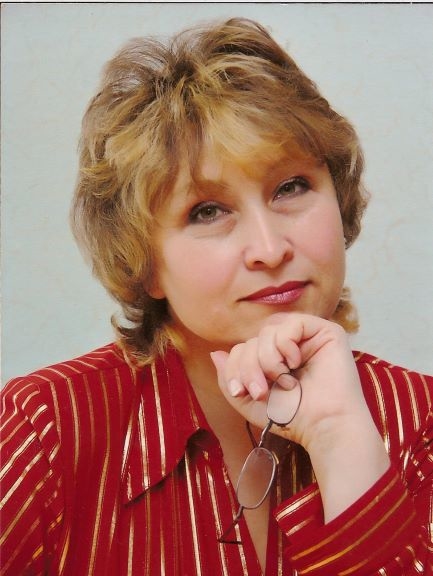
Scientists of the subsidiary of the “National agrarian science and educational center” JSC - LLP «Fisheries Research and Production Center» held an online consultation: "Cold water aquaculture". The speaker was Kushnikova Lyudmila Borisovna, senior researcher at the Altai branch of the LLP «Fisheries Research and Production Center».
The State Program for the Development of the Agro-Industrial Complex of the Republic of Kazakhstan for 2017 – 2021 years, refers to the weak development of aquaculture and the need to develop this area of agriculture. Aquaculture refers to the farming of fish, food invertebrates and algae under controlled conditions for commercial fish farming. This area of fish farming has become widespread in Europe, Asia and America. The development of aquaculture will ensure the country's food independence and is one of the ways to solve the problem of supplying the population with high-grade food, rich in proteins. The leading role here is assigned to industrial fish farming, which consists of lake, cage, basin farms, as well as installations with a closed water supply cycle. The technology of industrial fish farming is based on fish farming at a high stocking density by creating favorable conditions for cultivation, feeding with full-value feed, mechanization and automation of all production processes and obtaining marketable products throughout the year.
However, today we will discuss only the cage method of growing marketable fish in the reservoirs of the East Kazakhstan region, since the declared topic of today's broadcast concerns cold-water fish, and they are grown on the cage farms of the region.
In China, Mongolia, Russia and in the northern regions of Kazakhstan, cold-water fish are raised in lakes, but there is no such practice in our region. The cultivation of commercial cold-water fish in the basins and Recirculating aquaculture systems (RAS) is also not practiced.
Natural and climatic conditions of East Kazakhstan make it possible to carry out work on the commercial cultivation of cold-water fish in cages. A feature of cage fish farms is the extremely low costs of their creation and, accordingly, a quick payback. The positive features include simple control over the farmed fish, small area occupied by cages, convenient maintenance. Modern methods of growing fish in cages with super-dense planting, when the fish receives food from special feed dispensers, and the water in the cage is purified by a stream of water. At the same time, the fish almost does not move, does not spend energy on searching for and seizing food, and accordingly, it quickly gains weight. The disadvantage is due to the complete dependence on the temperature, hydrochemical and hydrological regime of the reservoir in which the cages are installed, the impossibility of using (with some exceptions) the natural food base of the reservoir.
In fresh waters, trout is the dominant cold water aquaculture in Western Europe and America. Trout has a good growth rate, good taste. The increased interest in breeding and raising this species of fish is not accidental. Growing trout is economically profitable because its meat and caviar are gourmet products. The well-known species of whitefishes are among cold-water fish - peled, ripus, as well as broads, muksun, and pelchir.
Not all bodies of water are suitable for growing cold-water fish species. There are factors that limit the possibilities of growing cold-water fish and they are called limiting factors, these include: the hydrological regime of the water body, the hydrochemistry of the water and the most important temperature factor.
Limiting factors:
1. Most often, in flowing water bodies, cages are installed in bays (for protection from winds), where the current speed is not more than 0.5 m / sec. It is necessary to take into account the nature of the bottom so that under the cage lines there are no relief depressions and under them the waste products of fish and the remains of food do not accumulate.
2. The water temperature in the surface layer should not exceed 20-21 0 C. The optimal water temperatures for growing cold-water fish species are 5-180 C.
3. The oxygen content should not be less than 7.0 mg / dm3.
4. There should be no anthropogenic load in the area of installation of the cage farm, both from industrial enterprises and from agriculture. Excess ammonium nitrogen, organic matter, heavy metals in water has a detrimental effect on fish farming.
Ust-Kamenogorsk reservoir in all respects is ideal for growing cold-water fish. It was created in 1952 in order to develop energy, water transport and water supply.
The reservoir occupies an intermountain valley of the canyon type with a length of 71 km. The width of the reservoir is 400-750 m, the maximum width is 1200 m. The reservoir is deep-water, the average depth with full design filling is 17 m, and the maximum depth in the part of the dam is 46 m.
The Ust-Kamenogorsk reservoir is a cold-water reservoir, its warming up is determined by the incoming water masses from the lower and middle layers of the Bukhtarma reservoir, which do not warm up above 8.0 ° C in summer. The features of the reservoir - significant water exchange, cold water, almost complete absence of littoral - make it of little use for creating a highly abundant ichthyofaunistic complex, but well suited for organizing cage farms.
One of the main aspects of fish farming is feeding it. The possibility of growing commercial fish in large volumes has appeared since the creation of dry extruded feeds, which are balanced in all components and have different pellet sizes for different age groups of fish. In addition, food has been developed for each type of fish - there are salmon and whitefish. Currently, foreign feeds are the most popular.
The speaker told in details such issues as the impact of cage farms on the quality of water in reservoirs and on the rules for the transportation of fish seed.
All videos of online consultations of our scientists can be seen on the LLP «Fisheries Research and Production Center» YouTube channel, as well as on our pages in Instagram and Facebook.


